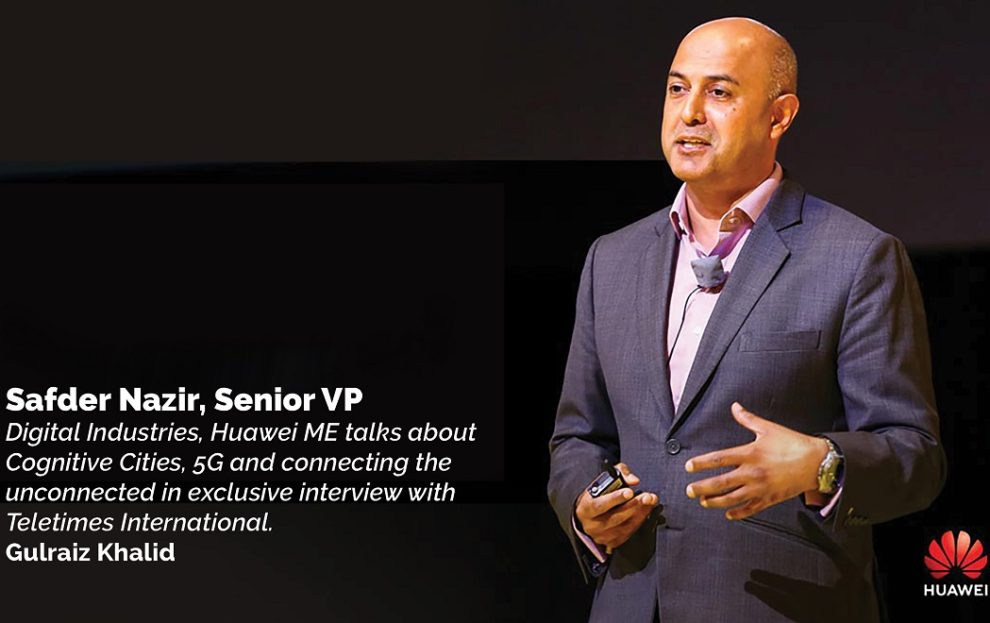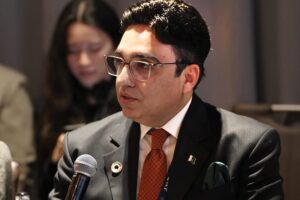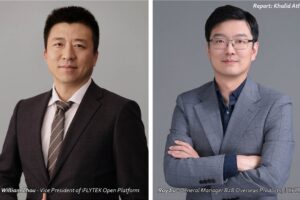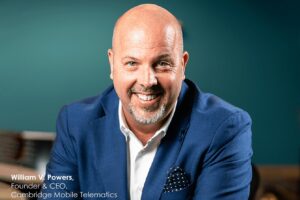Gulraiz Khalid: How does it feel to be back at GITEX in a post-covid world?
Safdar Nazir: The post-pandemic era right now seems to be witnessing a rising demand for in-person events and interactions. This year specifically, GITEX Global experienced a very busy period hosting thousands of visitors from all around the globe. Aligning with this, Huawei has also showcased its largest-ever presence this year, as the Diamond Sponsor of the event. Meeting on-ground with our high-level customers and partners at our booth allowed us to demonstrate the company’s ongoing innovations for the future in digital power, including AI, cybersecurity, 5G (paving the way to 5.5G), cloud-native 2.0 architectures, and industry applications. Visitors were also introduced to how Huawei designs and strategizes to meet the needs of various verticals and industries, as we continue to reveal how these solutions and technological advances are creating new economic value and enabling a green and intelligent society that aligns with national digital transformation goals.
GK: How would you define Cognitive Cities in comparison to Smart Cities?
SN:This is about a journey: from digital, to smart, to cognitive. If you look at the development of Smart Cities in a post-4G era, the technology driver behind ‘Smart Cities’ was IoT providing lots of use cases where you can connect things to interact with the citizens, and in the more recent times, we are looking at ‘Cognitive Cities’ where the technology transition is AI. A physical Cognitive City differs from conventional cities and Smart Cities in the fact that it is steadily learning from constant interaction with its citizens through the use of AI to become continuously more efficient, more sustainable and more resilient.
GK: You’ve been one of the champions for Smart Cities in the region for quite a while. How have the leading Smart Cities improved in the recent years and are we headed in the right direction?
SN: There’s been significant growth where ease of use and access to services has really improved. Partially fueled by the response to covid, the transformation growth has been tremendous, and you can do so many more things such as renewing your tenancy contracts completely online without any physical interaction.
Are we in the right direction? A Smart City program is considered more of a journey where each city can take its own path, so, as long as the cities are continuously improving, they’re on the right path. And, as more AI technologies are used to provide that continuous improvement, the cities are on the journey to become Cognitive Cities.
Dubai has been leading the way in many aspects and I can say, from a personal perspective, having lived here nearly 20 years, that the ability to access services is incredibly user-friendly. The fact that the UAE has a very clear direction in terms of renewable energy and a strategy for a circular economy means we can look forward to this journey continuing in a very positive manner.
GK: Would you like to talk a little bit about Huawei’s approach towards renewable energy?
SN: The approach for everyone right now should be to make products that are more energy efficient and focus on sustainable sources of energy. Huawei has the world record for the world’s most energy efficient data-center which was measured in Annualized PUE (Power Usage Effectiveness) of 1.11. How did we achieve that? By using technologies like AI, and solutions such as Huawei’s iCooling@AI which reduces the energy consumption of data centers while enabling smart cooling of large data centers and cutting PUE. Even in our base stations and our equipment, we are using materials that are reflecting heat and utilize free air cooling. It’s a single approach that we apply across our network portfolio which aims at energy efficiency for the entire network and everything is built and operated with that mentality.
GK: What does 5G mean for your area of business in specific?
SN: At Huawei, we now see the introduction of 5.5G, and not only 5G. This is considered highly transformative because the innovation removes any gap we might have faced in terms of bandwidth and latency, and accordingly, we would have unrestricted mobility in our services. As users, we should not have to think about whether something will work, the service has to be there for us when and wherever we need it, and the experience should be the same wherever I am and wherever I go – this is ubiquitous connectivity which is enabled through 5G or 5.5G.
One of the first use cases for 5G was the Fixed Wireless Access which creates the same experience as Fiber in places where you are on older copper networks. And this fiber-like experience means access to all the Smart City services in a ubiquitous manner. This is why we see places like NEOM making 5G a cornerstone for the development of their Cognitive City.
GK: In one of your recent blog posts, you talked about connecting the underserved. Would you like to share some information about Huawei’s efforts in that regard?
SN: As stipulated by the U.N, connectivity is a human right as well as the cornerstone of economic progress. Nevertheless, GSMA reports that more than 700 million people in the world remain unconnected, and many of these people live in hard-to-reach remote areas where it’s impractical or too expensive to connect them.
Connecting the unconnected is a key part of our digital inclusion strategy to create an inclusive society. For example, in rural Nigeria, Huawei teamed up with the local carrier MTN to bring connectivity to the remote village of Tobolo. For Adeshia, the community health worker at Tobolo, this connectivity can mean the difference between life and death; instead of traveling to nearby towns to ask doctors to visit the village, she can now call or text them, saving time – and lives.
You would have also seen at our booth how Huawei is using RURAL STAR and RURAL STAR PRO, as the simplicity of the system means that a node can be built in less than seven days, cutting setup costs and time by up to 70%. Additionally, the footprint is minimal – RuralStar consumes no more energy than five lightbulbs. So far, we have implemented this system in 60 countries connecting more that 50 million people.
GK: What role will Augmented and Virtual Reality play in smart cities?
SN: We’re already seeing these technologies play a huge role in sporting and gaming industries as we all know. I certainly see mixed reality having the potential to make our experiences in cities and built environments to be richer and easier. Imagine walking around an event like GITEX Global and being able to interact in a 4th dimension, where you can recognize people and have their LinkedIn profile pop up in-front of you. The missing piece for that interaction is figuring out the human-machine interface phase; we could do that by carrying our smart phone in front of us all the time – but who wants to do that? Smart glasses, for example, have been experimented, however they haven’t been widely adopted. The human-machine interface could be something we have not yet even imagined, and may be different for each use case, but the technology itself will really improve the experiences across smart and cognitive cities.












